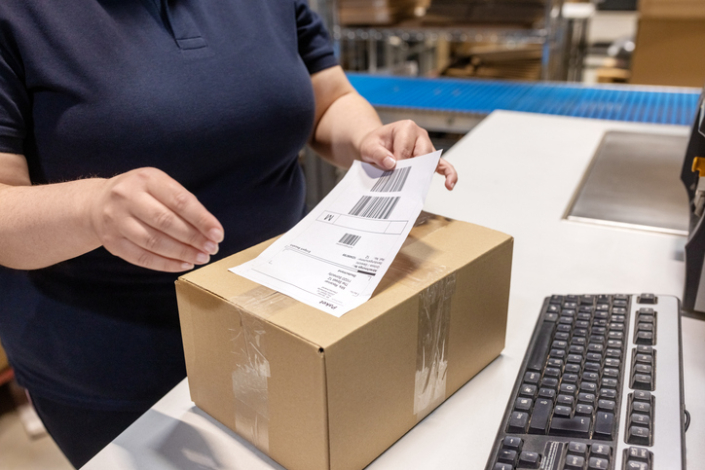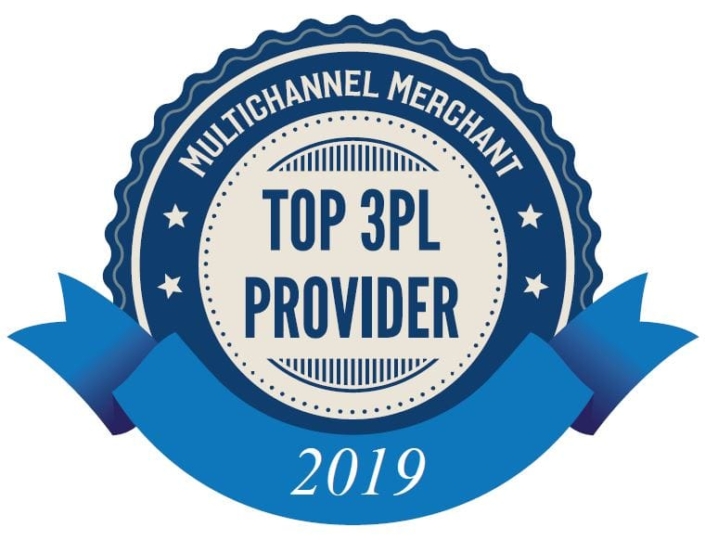What is the delivery experience and why does it matter?
You can have the slickest website, the best product, and a checkout flow smoother than a jazz playlist—and still lose the sale after the customer hits “Buy.” Why? Because the part they actually remember is what comes next: the delivery.
The delivery experience isn’t just about shipping speed. It’s the entire vibe from the moment someone places an order to when that package shows up (hopefully not looking like it survived a wrestling match). It includes tracking updates, timing, condition, communication, packaging—and how your brand shows up in all of it.
Here’s the kicker: 84% of customers say a bad delivery experience would stop them from shopping with a brand again. That’s not just a bummer. That’s a business risk.
In this guide, we’ll unpack what makes a delivery experience great, what can wreck it, and how to fix it—fast.
Four keys to a delivery experience that actually builds loyalty
Think of a great delivery experience like a restaurant meal. The food might be amazing, but if the service is slow, the order’s wrong, and no one checks on you—you’re not going back. Same deal with shipping.
A stellar delivery experience isn’t about flashy perks. It’s about getting the basics really right. These four factors can turn your shipping from forgettable (or worse—frustrating) into a loyalty-building machine.
1. Nail the timing or risk the customers
Customers don’t just want fast—they want predictable. If you promise delivery on Tuesday, showing up late (or looking like it got kicked down a flight of stairs) doesn’t cut it.
Accurate address data and proactive tracking are key here. Harvard Business Review found that 20% of packages don’t arrive on the first try – costing businesses billions of dollars. Ouch. Clean integrations with multiple carriers help ensure packages get where they’re supposed to go, without delays or reroutes. And automated tracking events mean fewer dropped balls when something slips off track.
2. Don’t leave customers hanging—keep them in the loop
You hit “Place Order.” And then… radio silence. Not great. Customers expect to know where their package is, when it’s coming, and if anything changes along the way. If they don’t, you can trust that they’ll be calling YOU to ask. In fact, WISMO (‘Where’s My Order?’) inquiries make up ~18% of support tickets—and at ~$12 a pop, that can add up fast!
That means real-time updates—not vague “in transit” statuses—and branded tracking pages that don’t make customers jump through hoops or bounce to a third-party site. When you control the flow of communication, you don’t just reduce WISMO calls—you build trust.
3. Let customers call the shots on delivery
Not everyone’s sitting at home at 3 p.m. on a Tuesday waiting for a box. Delivery experiences improve dramatically when customers have options: flexible delivery windows, safe-drop instructions, or even alternative carriers for tricky locations.
The brands getting this right are the ones using flexible shipping setups that let them tap into the best carrier for the job—without locking into just one network. That flexibility is especially powerful during peak season or regional surges.
4. Make the final mile feel like your brand
The box hitting the doorstep is your last chance to impress. Even basic things—like branded packaging, a friendly delivery email, or a clear return insert—can make a big difference in how a customer feels about your brand.
That final mile isn’t just logistics. It’s customer experience. And the brands that treat it that way stand out in a sea of brown boxes and “your package has shipped” emails.
Where delivery falls apart: The most expensive mistakes you’re probably making
The last mile is the trickiest and most expensive leg of the journey. Apartment buildings, rural addresses, gated communities—so many things can go sideways at the finish line.
And when it does? It’s not just a hassle—it’s expensive. Failed first-time deliveries happen in 8–20% of all shipments, costing businesses roughly $17 per attempt and adding up to nearly $200K a year for many retailers.
Retailers that rely too heavily on a single carrier often struggle here. Instead, many are turning to platforms that tap into a broader carrier network—so they can route shipments based on location, service reliability, and cost. That flexibility pays off when delays hit or volumes spike.
Overpromising is a loyalty killer
Overpromising is a fast track to disappointment. Telling customers their package will arrive in two days—then showing up late with no explanation—does more harm than just missing a deadline. It makes them question your entire brand.
Leading brands are leaning into dynamic ETAs and predictive delay alerts, especially when shipping conditions shift. Tools that integrate tracking data and regional delivery signals can help spot slowdowns early and adjust expectations before the complaints start rolling in.
The last mile is a minefield
The last mile is the trickiest and most expensive leg of the journey. Apartment buildings, rural addresses, gated communities—so many things can go sideways at the finish line.
Retailers that rely too heavily on a single carrier often struggle here. Instead, many are turning to shipping platforms that offer access to a broader network of carriers—making it easier to route shipments based on location, service reliability, or cost efficiency. That flexibility pays off when delays hit or volumes spike.
Your customer shouldn’t know more than your team
This one’s a killer. If your customer doesn’t know where their package is—or worse, if your support team doesn’t know—you’re headed for a flood of “Where is my order?” tickets.
The best brands automate milestone-based updates tied to package events, not just standard carrier statuses. That means real-time pings when packages hit sorting hubs, run into delays, or are out for delivery. It also means branded tracking pages that feel like a seamless extension of the brand—not a clunky redirect to someone
Your tech stack shouldn’t be sabotaging your shipping
Here’s a fun game no one wants to play: flipping between five platforms just to figure out why one package is delayed.
When your shipping, tracking, support, and carrier tools don’t talk to each other, things fall through the cracks. It’s hard to automate, hard to scale, and nearly impossible to give your customers the consistent updates they expect.
More retailers are consolidating with unified platforms that handle shipping, tracking, labeling, and notifications in one place. Not only does it simplify life for your ops team, but it also makes it easier to plug into tools like help desks, CRMs, and customer messaging platforms—so your internal teams stay aligned, and your customers stay informed.
The good news? All of these breakdowns are fixable. And the brands that are fixing them aren’t just saving money—they’re turning delivery into a retention engine.
Fix it fast: Four smart ways to level up your delivery experience
You don’t need a six-figure logistics overhaul to improve delivery. Often, small, smart shifts have the biggest payoff. These four moves can help you fix what’s broken, scale what’s working, and turn your customer delivery experience into a competitive edge.
1. Free up your team by automating where you can
Manual shipping workflows are like walking uphill in flip-flops—doable, but unnecessarily painful.
Automation isn’t just about speed; it’s about consistency. From printing labels to sending tracking updates to flagging delays, the more you automate, the more control you keep (without adding headcount). Leading retailers use event-driven tracking updates, auto-generated labels, and integrated web-hooks to keep both their teams and their customers in the loop—without babysitting every shipment.
2. Partner smarter, not harder
Not every business can manage in-house delivery—and frankly, most shouldn’t. But the carriers and platforms you choose shape your customer experience just as much as your product page.
Instead of locking into a single provider, high-performing brands are leaning into multi-carrier strategies that prioritize flexibility. If one network slows down, you can shift volume without missing a beat. It’s not just a Plan B—it’s protection against peak season chaos, regional slowdowns, and carrier rate hikes.
3. Don’t ignore shipping costs
Free shipping gets clicks, but it doesn’t always make sense for your bottom line. That doesn’t mean you have to ditch it altogether—just get strategic.
Offer shipping thresholds. Experiment with flat-rate options. Tie “free” to loyalty perks or subscriptions. If you’re saving money on shipping by optimizing carrier selection or consolidating packages, pass some of that value to your customers. They don’t need it to be free—but they do need it to feel fair.
4. Own the narrative and earn trust while doing so
The single most powerful thing you can do? Keep customers in the loop.
Clear, branded tracking. Honest updates about delays. Messages that sound like a real human wrote them. These aren’t just niceties—they’re conversion tools. Retailers who nail transparency see lower return rates, fewer support tickets, and higher repurchase rates. When customers know you’ve got their back, they’re way more likely to come back.
Own the delivery experience—without paying extra
Most shipping platforms tack on fees for branded tracking, carrier integrations, or API access that actually does more than print a label. The result? You’re paying more just to keep your customers informed—and often still sending them to a third-party site to check their package status.
That’s not how it should work.
With EasyPost, branded tracking, real-time web-hook updates, and multi-carrier shipping are all built into the same API—no add-ons, no hidden costs. You can track packages across USPS, FedEx, UPS, DHL, and dozens of regionals from a single setup. Even better? You stay in control of the customer experience from order to doorstep, without bouncing people between carrier portals or cobbled-together tools.
And because everything’s handled in one place, you can actually automate it—triggering updates to your help desk, your customers, your warehouse, or whoever needs to know what’s happening next.
Win with a better delivery experience
The delivery experience isn’t just the last step in your customer journey—it’s the one they remember most. And whether it earns you repeat business or a one-star review depends on how well you manage the details.
Let’s recap:
- Speed matters—but predictability matters more.
- Communication should be proactive, not reactive.
- Flexibility wins loyalty.
- And your delivery strategy is only as strong as the tools behind it.
If you’re ready to stop treating shipping like a cost center and start using it as a brand advantage, you’re in the right place.
Sign up for free and see how EasyPost helps you take full control of your customer delivery experience—without over complicating your stack or blowing your budget.




